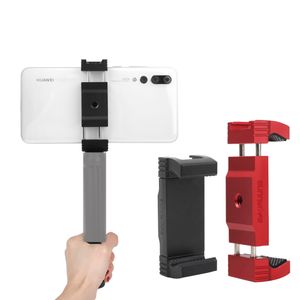DSLRs Aren’t Dead Just Yet!
In the past few years, traditional DSLR cameras have started to cede significant market share to mirrorless cameras. This newer style of camera has risen from obscurity to mainstream in the last decade. Recent trends indicate that this is no mere blip on the radar. Sony, Fuji, and now Canon and Nikon have all jumped into the mirrorless market with a growing collection of cameras and lenses that show no sign of slowing down. However, just because many think mirrorless is the way of the future doesn’t mean the end of DSLRs. Contrary to what you might think, DSLRs aren’t dead!

Nikon D750, 85mm, f/2, ISO 2000, 1/350 second
In the same way that film offers some advantages over digital, traditional DSLRs have a few tricks up their sleeves that make them uniquely relevant even in this age of modern mirrorless models.
Before I get too deep into the content of this piece, I want to make one thing clear: I’m not advocating that one type of camera is better than the other. Both types of cameras have strengths and weaknesses.
Just because you might prefer one or the other does not make you a good or bad photographer! Cameras are tools to get a job done. All I’m saying here is that DSLRs aren’t dead and still have plenty of advantages to offer.

Mirrorless cameras like this Fuji X100F have a lot of advantages. but sometimes a DSLR is the
right tool for the job. Nikon D750, 85mm, f/2, ISO 640, 1/200 second.
Optical viewfinder
Mirrorless cameras have electronic viewfinders, which give them the ability to do things you simply can’t get with an optical viewfinder. That doesn’t mean that optical viewfinders, which are found on all DSLRs, have nothing to offer by comparison. Far from it! Optical viewfinders might not show you the exposure of your image in realtime, but they do give you a perfectly clear view of the scene you are shooting.
Nikon D7100, 85mm, f/2.8, ISO 100, 1/1000 second
Pixel density, refresh rates, color accuracy, and dynamic range are still issues in a lot of mirrorless cameras. These are getting better, but all electronic viewfinders show a digital representation of the real world which does have some limitations.
Optical viewfinders have none of these issues. They show the real world without translating it to pixels. The display won’t slow down or get choppy depending on lighting conditions or how fast you pan the camera. You don’t need to worry about color accuracy with an optical viewfinder because what you see is exactly what the world looks like.

Power consumption is always going to be better with optical viewfinders because they consume no power at all. This means you can compose your shots without even turning your camera on. While mirrorless cameras have dramatically improved in this regard, DSLRs aren’t dead and still have an advantage in this area.
Lens selection
Companies like Sony and Fuji have a solid lineup of mirrorless cameras and lenses that they have been building for several years. Canon and Nikon will get there too with their mirrorless R and Z lenses. But in the meantime, traditional DSLRs are still the king of this particular hill.Again, that’s not to say they are better! Just that DSLRs aren’t dead and well worth considering for many photographers today.

Nikon D750, 85mm, f/2.9, ISO 100, 1/1500 second
All mirrorless cameras can use older lenses with adapters. It’s not as though a Sony A7IV or Canon Eos R is limited to a paltry selection of just the most recent lenses. But adapters are one more thing to buy and carry around, and sometimes features like autofocus are limited when working with adapters. If you want access to the widest array of native glass possible, DSLRs are still the way to go.
Size
Mirrorless cameras, by their very definition, are smaller in size than DSLRs because they don’t need to accommodate a flip-up mirror. That means they can be a lot slimmer and more compact, which a lot of people like.On the flip side, one of the reasons DSLRs aren’t dead yet is because they appeal to people who like a bigger, chunkier camera.

The Nikon D750. EXIF: Canon Rebel Ti, 22mm, f/2.5, ISO 100, 1/250 second
The size of traditional DSLRs is particularly important if you shoot with larger lenses, like a 70-200 f/2.8. Or even a walkaround zoom lens like an 18-270mm. The added camera weight serves to balance out the heavy lens and make the shooting experience a little easier than a small mirrorless camera.
Legacy
It’s easy to get caught up in the internet chatter about mirrorless cameras. There’s no doubt they are the way of the future. Also, seemingly, every photography-based blog and YouTube channel is filled with discussion about the latest mirrorless camera technology. It’s enough to make you think that if you prefer a DSLR you must be some kind of out-of-touch caveman.
The Nikon D750. Exif: Canon Rebel Ti, 21mm, f/5.6, ISO 100, 1/100 second
This means that, in addition to lenses, there are all kinds of resources for people who want to learn more about using this style of camera. A brand-new Canon or Nikon DSLR shares most of its buttons, menus, and controls with their counterparts from years or even decades ago.

Canon Rebel Ti, 10mm, f/5.6, ISO 100, 1/500 second
This isn’t to say that mirrorless cameras don’t have legacy support either. Some, like Fuji, model their dials and controls after cameras that were popular several decades ago. But just because they share similar controls doesn’t mean they have the same degree of support.

Nikon D200, 50mm, f/1.8, ISO 400, 1/320 second
What about you? Are you a traditional DSLR shooter or have you gone over to mirrorless? Or are you like me, and use both types of cameras? I’m curious to hear your thoughts in the comments below. If you have other reasons that DSLRs aren’t dead please feel free to share them.





































